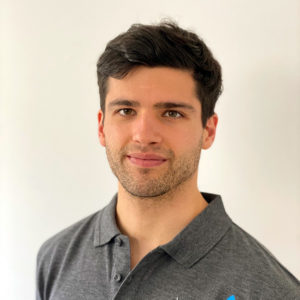Shoulder Injury: Surgery isn’t Always the Answer
The shoulder is the THIRD most commonly pain affected area in the human body having an
impact on 25% of us in our lifespan (1,2). This could be from a general insidious onset of
pain due to a direct traumatic event. But its also interesting that with such a common injury, surgery is often the first consideration.
The most commonly seen Shoulder injury in the clinical setting is Rotator Cuff Related Shoulder
Pain (RCRSP)(3). The two common surgery methods are Subacromial Decompression shoulder
surgery (that hasn’t been proved to outperform a placebo surgery on a 12 month follow up), and a
Rotator Cuff Tendon Repair which also sees a large percentage of failed repairs with a compromise in
daily shoulder function at 2 years (3).
Despite this uncertainty, shoulder surgery is well and truly on the rise (1). Without undermining surgery there is certainly a place and at times it can be inevitable to avoid. However some shoulder presentations are taken to the surgery theatre too early. This is prior to following a precise conservative plan by a trained Osteopath, Physiotherapist or other trained Allied health professional.
There is no doubt that in the wider society a shoulder that isn’t healing by itself or might have a
large history of previous injuries can be scary, and often won’t get better without surgery.
The necessity to repair a tendon tear at the Rotator Cuff needs to be taken into the asymptomatic
population (1). Many people would be asymptomatic and unimagined with Rotator Cuff tears yet a
decision can be made from a scan without this comparison at least appreciated. The beauty of
conservative treatment is that a practitioner can individualize a program using a biopsychosocial
and physical assessment to meet interventions on all factors of the persons life.
The Osteopath Approach
As an Osteopath, the patients case history is vital in working through any underlying reasoning to the
progression of the shoulder pain, and often is the key to determining an accurate diagnosis along
with an examination of the relevant tissues affected. Rarely a persons shoulder pain is present
because they’re just unlucky, there is always a causative factor and our role is to intervene early before the surgery word is even mentioned. This is an essential part of the picture, it dilutes the phenomenon of early surgery and encourages a more educated decision for the patient about their own body.
Once a strong foundation of the patients history of pain is gained, we make an effort to reduce
pain and gradually incorporate movements in the correct planes. We then follow this with a holistic
strength program. On the failure of these attempts further interventions may be discussed but
they’re out of the question until a conservative approach like this is taken.
So don’t be afraid to test your bod, and try not to sink to the most intense and scariest option once
professional medical advice is sought. People often find they learn a lot about their body
taking a structured conservative approach and it will certainly gear them in the most positive
position to handle pain and injuries they face in the future.

Author: Dr Anthony Liberatore (Osteopath)
References
(1) Cuff, A. ‘Physio’s not going to repair a torn tendon’: patient decision-making related to surgery
for rotator cuff related shoulder pain. Physio Network. 2021;August 2021(41): 26-29.
(2) Kumar P, Clark M. Clinical Medicine. WB Saunders 2002; [2] Murtagh, J. General Practice.
Second Ed. McGraw-Hill, 1998. es
(3) Karjalainen, T.V, Jain, N.B, Page, C.M. Subacromial decompression surgery for rotator cuff
disease. Cochrane Library. [Online] 2019; Available from: https://www.cochranelibrary.com/
cdsr/doi/10.1002/14651858.CD005619.pub3/full




